Author

What is Marine Debris?
The Industrial Revolution, now also known as the First Industrial Revolution, was the transition to new manufacturing processes in Europe and the United States, in the period from about 1760 to sometime between 1820 and 1840. The use of chemicals and fuel in factories resulted in increased air and water pollution and increased use of fossil fuels. Coal-burning caused increased acid rain, which is a phenomenon that occurs when pollutants are released into the atmosphere and then fall back to Earth as precipitation.
According to the National Oceanic Atmospheric Administration (NOAA), U.S. Department of Commerce, Marine debris is defined as any persistent solid material manufactured or processed and directly or indirectly, intentionally or unintentionally, disposed of or abandoned into the marine environment or the Great Lakes. [1]
Why is Marine Debris a Problem? Marine debris can kill and harm aquatic wildlife through ingestion and entanglement, can disperse invasive species, even endanger human health, cause damage to shipping vessels, and hurt businesses and tourism by eventually polluting our beaches and coastline.
Let us go through some case studies from throughout the World. In July 2020, Borgen Magazine published that “India has more than 1.2 billion people, but only a little over 30% of its population lives on less than $1.25 a day. Around 80% of India’s water is severely polluted because people dump raw sewage, silt, and garbage into their rivers and lakes. This has led to water being undrinkable and the population having to rely on illegal and expensive sources. Each year, more than 1.5 million Indian children die from diarrhea. Out of the entire Indian population, experts predict that 40% of people may not have a connection to a clean water source by 2030.” [2]
In 2015, a report by the United Nations Environment Programme became the bearer of India’s bad news. The country, already struggling with a polluted land and air, had another problem: ocean pollution. The report informed that India dumped 0.6 tons of plastic waste into oceans annually and ranked 12th among the top 20 countries responsible for marine pollution. The numbers showed how marine pollution had climbed up to become one of India’s critical pollution problems. [3]
According to Reuters, in 2018, China dumped a total of 200.7 million cubic meters of waste into its coastal waters. It was a 27% rise on the previous year and the highest level in at least a decade, the country’s environment ministry said. [4]
In March 2017, The Conversation Magazine wrote that Bali had seen growing environmental problems such as pollution and freshwater scarcity in recent years. Popular tourist destination Kuta beach is regularly covered in waste. Most of this is plastic that washes ashore during the rainy season. The island’s garbage dumps are reportedly overflowing. This makes solid waste management a pressing issue. Some 60% of Bali’s water catchment is drying up, threatening freshwater resources.
On top of that, Indonesia is the World’s second-biggest marine polluter after China, discarding 3.22 million metric tons of waste annually. This accounts for 10% of the World’s marine pollution. The effects of marine pollution have on ecosystems, and humans are beginning to be well documented. Marine scientists have found harmful consequences of marine pollution to sea life, ecosystems, and humans.
Plastic can kill ocean mammals, turtles, and other species that consume it. It can also poison food and water resources, as harmful chemicals leach out of the plastic. It poses threats to human health as well. Plastics leach cancerous toxins. After being consumed by marine species, they enter the food chain, eventually ending up in fish we eat. Marine plastic pollution is a global problem, and Indonesia’s beaches present pressing examples to study the socio-economic effects this has on coastal communities. [5]
In Bangladesh, sea-based pollution mainly occurs due to oil spoilage, water bilge, ballast water activities, and seabed activities (Ahmed 2013). Microbial corrosion occurs on the Bangladesh coast due to increased pollutants and pathogenic microbial diversity at Karnafuly river estuary (Alam 2018). [6]
According to a Science-direct article published in March 2018, Marine debris in Sri Lanka was assessed for the first time. Beaches contained 4.1 large pieces of debris (>25 mm) per square meter. Packaging material comprised 55% of beached debris. Beach typology greatly influenced the quantity of debris. [7]
In February 2017, Infoplease.com noted that 238,103 debris items were collected in the United States during the five-year study. The debris was classified into three categories: land-based junk, general source debris, and ocean-based debris. Land-based waste, such as straws, balloons, and cans, accounted for 48.8% of all debris. The next most significant debris source came from public sources, such as plastic bottles and bags, with 34.4% of total debris. Ocean-based debris, including rope, fishing line, and buoys, was the smallest source at 17.7%.
During the five-year study, a total of 196,387 debris items were collected in the continental United States. Land-based and general-source objects made up the majority of debris collected. Only 14.2% of waste came from ocean-based pollution. The amount of land-based and ocean-based trash did not vary significantly over five years. General-source debris, however, increased by 9.8% every year. [8]
Top 20 Countries Ranked by Mass of Mismanaged Plastic Waste:
 Image Source: Earthday.org
Image Source: Earthday.org
Sources of Marine Pollution
According to NOAA, 80% of pollution to the marine environment comes from the land. One of the most significant sources is called nonpoint source pollution, which occurs due to runoff. Nonpoint source pollution includes many small sources, like septic tanks, cars, trucks, boats, and more comprehensive sources, such as farms, ranches, and forest areas. Millions of motor vehicle engines drop small amounts of oil each day onto roads and parking lots. Much of this, too, makes its way to the sea.
Some water pollution starts as air pollution, which settles into waterways and oceans. Dirt can be a pollutant. Topsoil or silt from fields or construction sites can run off into waterways, harming fish and wildlife habitats. [9]
Various Causes of Ocean Pollution [10]
- Sewage. Pollution can enter the ocean directly. Most sewage finds its way into the sea as either poorly treated or untreated discharge or as stormwater runoff. In places with little to no infrastructure, most wastewater goes untreated, like the developing world.
- Toxic Chemicals from Industries. Industrial and agricultural waste is another most common form of trash directly discharged into the oceans, resulting in ocean pollution.
- Land Runoff. Runoff is a significant source of water pollution. As the water runs along a surface, it picks up litter, petroleum, chemicals, fertilizers, and other toxic substances. From California to New Jersey, beaches in the U.S. are regularly closed after heavy rainfall because of runoff, including sewage and medical waste.
- Large Scale Oil Spills. Oceans are polluted by oil daily from oil spills, routine shipping, runoffs, and dumping. Oil cannot dissolve in water and forms a thick sludge in the water. This suffocates fish, gets caught in marine birds’ feathers, stopping them from flying, and blocks light from photosynthetic aquatic plants.
On April 20, 2010, the British Petroleum Deepwater Horizon drilling rig exploded in the Gulf of Mexico, killing 11 men and releasing as much as 5 million barrels of crude oil into the sea. It is believed that as many as 53,000 barrels of oil a day flowed from the broken well until BP was able to stem the release on July 15, 2010. It was the most significant offshore spill in U.S. history. But perhaps one of the more disturbing aspects of the Deepwater Horizon oil spill was the cleanup.
- Ocean Mining. Mining may destroy deep-sea habitats, eradicate rare and unique species, and introduce sediment clouds, noise, toxic chemicals, vibration, and other pollution forms into pristine environments. Restoring ecosystems damaged by mining is not realistic in a deep-sea environment, the letter states.
- Littering. Our waste often gets washed into our rivers and coasts without any treatment. This waste might be the significant bits you can see like plastic bags, dead animals, dog poo, and ciggie butts. They build up and pollute our water to such an extent that waterways become unlivable for native plants, fish, and animals.
Various attempts to reversing the effects of widespread Marine Pollution
1- Giant Plastic Catcher was installed in the Pacific Ocean to catch the Marine Debris collected in water currents in the Pacific Garbage Patch. [11]

When a Dutch teenager went swimming in the sea in Greece seven years ago, he was shocked to see more plastic than fish. Boyan Slat was so appalled by the pollution that he soon started to campaign for the oceans to be cleaned up. For a long time, few people took him seriously. Here was a university drop-out with a far-fetched idea that indeed could never work.
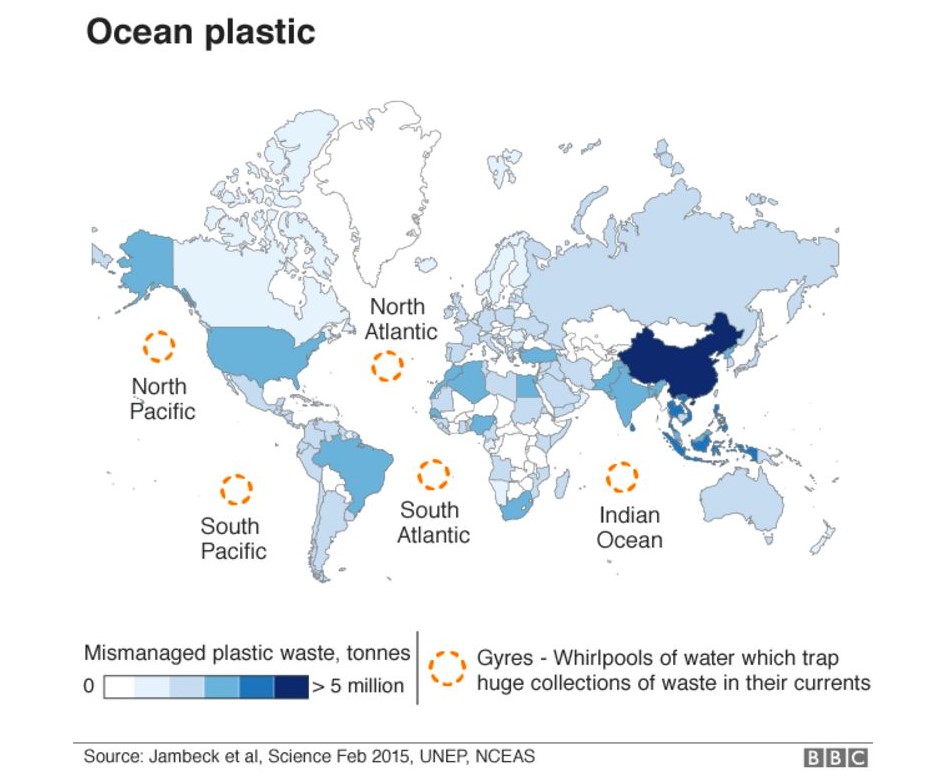
Their target is the eastern Pacific and the Great Garbage Patch, where circular currents have concentrated plastic in one large area. The aim is to halve the amount of pollution in the patch every five years so that by 2040 almost all of it will be gone.
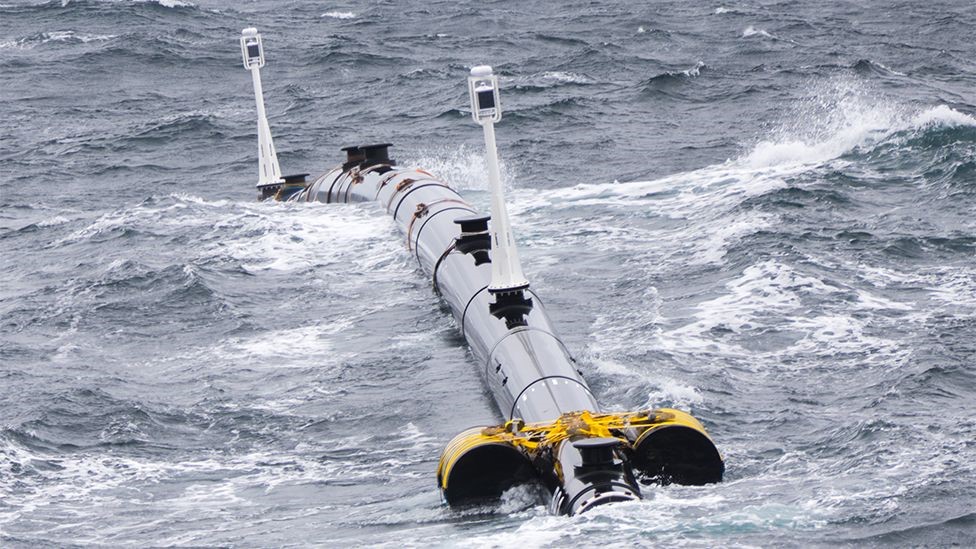
Giant Plastic Tube for Garbage Collection. Image Source: BBC News
The critical point is that the collection system is passive – there are no motors, no machines. Instead, it’ll drift, acting like an artificial coastline, gently gathering any plastic in its path. Like a giant snake, made up of tube sections, it’s 600m (2,000ft) long and will float in a giant ‘U’ shape. Beneath it, a screen will hang down 3m (10ft).
Because the plastic is floating just at or slightly below the surface, it only drifts with the ocean currents’ force. The wind and waves are also shifting the collection system. It should travel about one knot faster, shepherding the plastic into a dense mass.
2- In March 2018, the city of Kwinana, Australia, installed two drainage nets in Henley Reserve. [12]
The drainage nets or so-called “trash traps” were placed to reduce plastic waste discharge from drainage systems. The nets are designed to prevent pollutants and solid waste, carried by stormwater from the local road network, from flowing into the nature reserves. The trash traps were placed on the outlets of two drainage pipes, located between residential and natural areas.
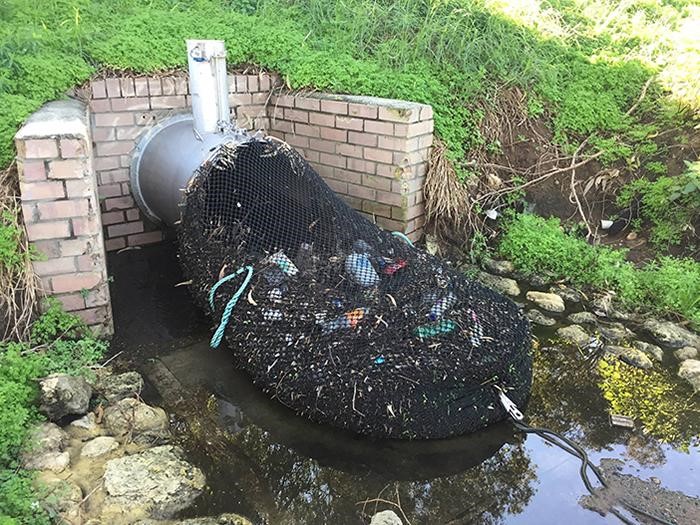
Image Source: City of Kwinana, Australia. Article by boredpanda.com
3- Latest Advances in Oil Spill Cleanups [13]
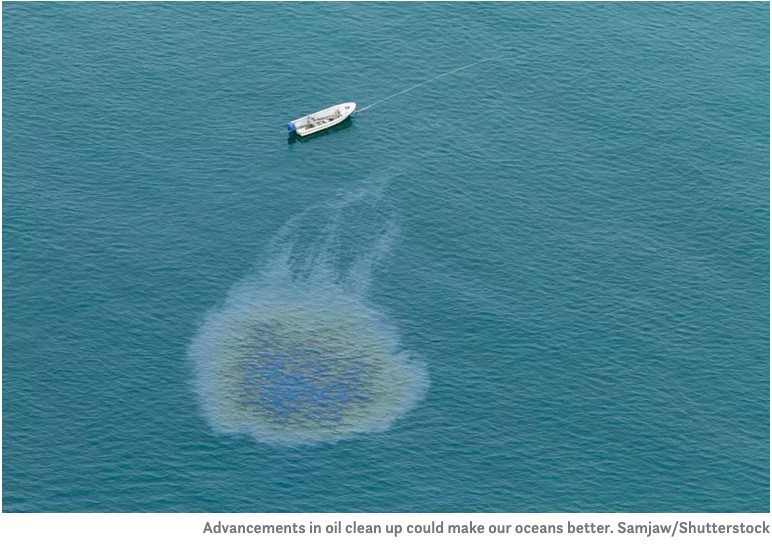
As experts noted at the time of the disaster, widespread oil spill cleanup technology had not advanced much in the 20 years since the 1989 Exxon Valdez disaster.
Researchers at Case Western Reserve University have developed a super-lightweight clay sponge to draw out oil from contaminated water. The extracted oil could then be recycled. The substance that experts call an aerogel is a freeze-dried mixture of clay with a polymer and air. It works in freshwater, saltwater, and bare surfaces.
After the 2010 spill, Wendy Schmidt, president of the Schmidt Family Foundation, which works to create clean energy solutions, launched the Wendy Schmidt Oil Cleanup X Challenge. The $1.4 million competition encouraged the best and brightest in the field of oil cleanup to present their solutions. The winner was Elastec/American Marine, an Illinois-based company that developed a kind of barrel skimmer that can separate oil from water, even in waves. The skimmer met the contest’s minimum requirement of an efficiency rate of 70 percent, skimming as much as 2,500 gallons per minute.
Nature may soon mop up after our spills. Scientists in Norway have discovered that simple peat moss is extremely good at absorbing oil. Kallak Torvstrøfabrikk is developing a Kallak Absorbent product, which can be placed directly into the oil-soaked water.
4- Large Scale Beach Cleanup Drives [14]
In September 2019, NDTV reported World’s most massive beach cleanup drive held at Odisha’s Puri beach. More than ten thousand volunteers participated in the campaign at several places along the district coast. The mega cleanliness drive was organized at Odisha’s Puri beach to mark the International Coastal Cleanup Day.
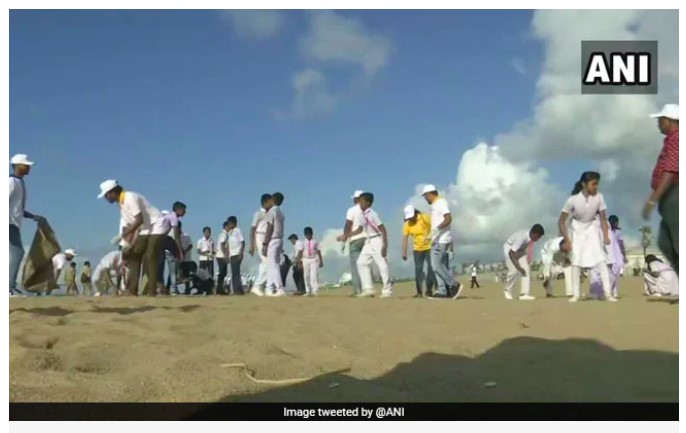
For the 119 Sundays, volunteers have toiled in the sludge to remove 12,000 tonnes of plastic from Versova Beach – and they’re still going strong. [15]
In October 2015, a young lawyer from Mumbai named Afroz Shah decided to do something about all the garbage on his beloved Versova Beach. Along with his 84-year-old neighbor, Harbansh Mother, Shah headed out with gloves and a bag to start picking up trash. Little did he know it would become a massive movement.
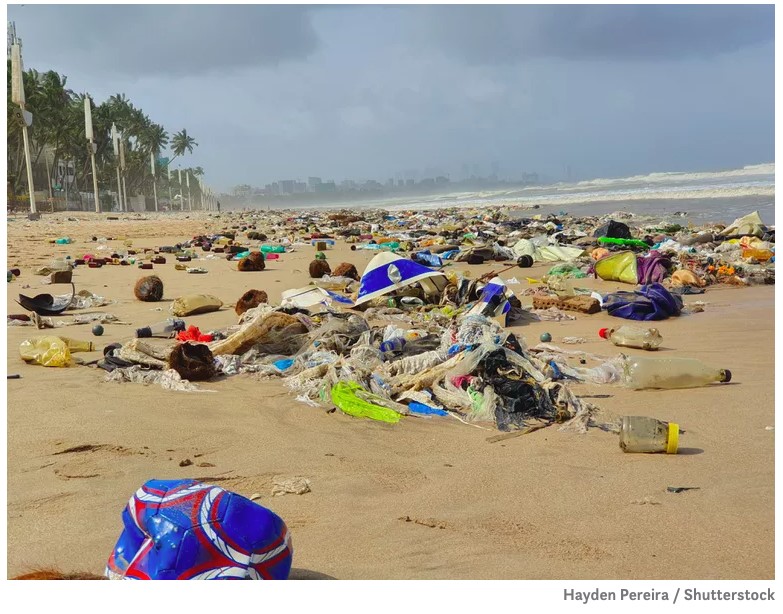
Image Source: Versova Beach, Mumbai. Article by Treehugger.com
5- Documentaries and Short Films to spread Awareness about the danger we are bringing to Environment through Marine Debris causing pollution. [16]
(i). The Smog of the Sea
A crew of surfers, a musician, spearfisher, bodysurfer, and marine scientist embark on a one-week voyage to the Sargasso Sea in search of the infamous patches of floating garbage. Instead, what they encounter is an ominous ‘fog’ of microplastics—a mesmerizing 30-minute watch.
YouTube Link: https://www.youtube.com/watch?v=jXURG3meS-Q
(ii). Blue Planet II
The soft tones of David Attenborough. Out-of-this-world music by Hans Zimmer. Beautiful and mind-boggling sea creatures. If that isn’t enough to persuade you to watch this award-winning series, I don’t know what is! This BBC series explores the wonders and fragility of the marine World. The stunning visuals filmed in 39 countries will both astound and shock you, leaving you wanting to do more to protect our oceans. Because, as David says, ‘the future of all life depends on us.’
YouTube Link: https://www.youtube.com/watch?v=kAphgHhlteM
(iii). A Plastic Ocean
David Attenborough said this was ‘one of the most important films of our time.’ And with that review, I’m sold. This award-winning film started as an adventure to film the magnificent blue whale in the Indian Ocean. What they found there was something even more enormous – a thick layer of plastic litter. The documentary then follows a filmmaker and record-holding freediver on their journey across the World to report how plastic is damaging our seas and what is being done to stop it.
YouTube Link: https://www.youtube.com/watch?v=6zrn4-FfbXw
(iv). Plastic is Forever
This film is made by 13-year old Dylan D’Haeze to help kids, and adults, understand the issue of plastic pollution and what we can all do about it. Dylan wanted to know what happened to plastic when thrown away, so he started to investigate. This is a truly inspiring and very informative film from a 13-year old perspective that shows us all how kids really can save the planet.
YouTube Link: http://www.kidscansavetheplanet.com/plasticisforever.html
(v). The Beauty
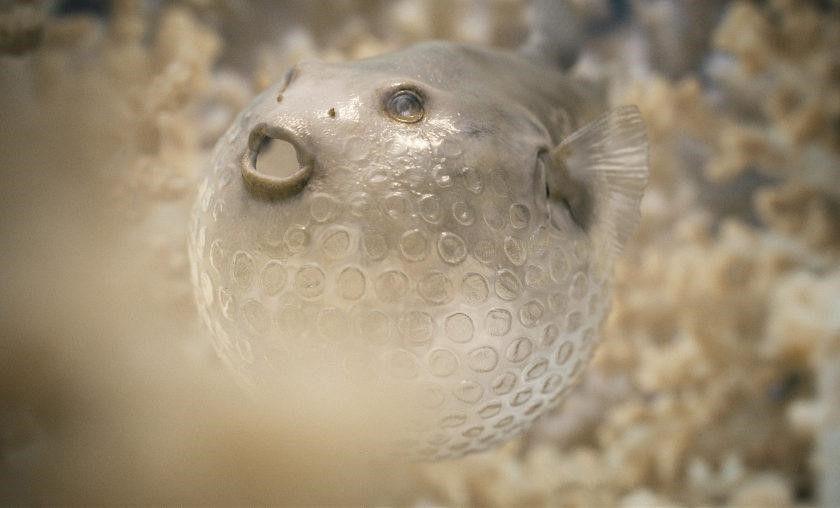
Image Source: The Beauty by Pascal Shelbli, zippyframes.com.
The animation short The Beauty by Pascal Schelbli from Filmakademie Baden-Württemberg, Germany, has won the Student Academy Award 2020. The Beauty deals with the plastic pollution of the World’s oceans and thus hits the times’ spirit. The film takes the audience on a poetic journey through a fascinating underwater world, where plastic and nature become one entity. For one moment, worries and feelings of guilt seem to dissolve between eerily beautiful coral reefs and the mysterious depths of the ocean. [17]
71% of the Earth, as observed from Space, is covered by Oceans. Oceans and Seas are our lifelines. Without Oceans, not only other living creatures, but Human Beings will cease to exist. The time to act to save the Oceans from Marine Debris is now. As aware individuals, we should take it upon us to make others around us aware and act responsibly.
References
[1] Web Article on ‘What is Marine Debris?’ by National Oceanic Atmospheric Administration (NOAA), U.S. Department of Commerce. https://oceanservice.noaa.gov/facts/marinedebris.html
[2] Web Article on ‘How Water Pollution in India Kills Millions’ by Borgen Magazine. https://www.borgenmagazine.com/water-pollution-in-india/
[3] Web Article on ‘World Oceans Day 2019: India’s Contribution To Ocean Pollution’ by Siya Bhatia in letmebreathe.in. https://letmebreathe.in/2019/06/08/world-oceans-day-2019-gender-and-oceans
[4] Web Article on ‘China’s ocean waste surges 27% in 2018: ministry’ by Muyu Xu, David Stanway, Reuters. https://www.reuters.com/article/us-china-pollution-ocean
[5] Web Article on ‘Indonesia vows to tackle marine pollution’ by The Conversation, March 2017. https://theconversation.com/indonesia-vows-to-tackle-marine-pollution-74038
[6] Paper Titled ‘Land-based marine pollution control in Bangladesh: A Suggested framework with a critical analysis of national legal issues’, Md. Alam October 2018
[7] Paper Titled ‘Composition and abundance of marine debris stranded on the beaches of Sri Lanka: Results from the first island-wide survey’, Jang, Ranatunga, Mok, Kim, Hong, Gunasekara, March 2018, Elsevier, https://doi.org/10.1016/j.marpolbul.2018.01.018
[8] Web Article on ‘Marine Debris in the United States’ by Infoplease Staff, February 2017. https://www.infoplease.com/math-science/earth-environment/marine-debris-in-the-united-states
[9] Web Article on ‘What is the biggest source of Pollution in the Ocean?’ by National Oceanic Atmospheric Administration (NOAA), U.S. Department of Commerce. https://oceanservice.noaa.gov/facts/pollution.html
[10] Web Article on ‘Causes and Effects of Ocean Pollution’ by Arcadia Blog, August 2017. https://blog.arcadia.com/causes-effects-of-ocean-pollution/
[11] Web Article on ‘Ocean cleanup device successfully collects plastic for the first time’ by Daniel Boffey, The Guardian, October 2019. https://www.theguardian.com/environment
[12] Web Article on ‘Australian Town Comes Up With A Genius Way Of Stopping Pollution’ by Neringa Utaraite in BoredPanda, October 2019. https://www.boredpanda.com/drainage-nets-catching-trash-kwinana-city/
[13] Web Article on ‘6 of the Latest Advances in Oil Spill Cleanup’ by Katherine Butler in TreeHugger, May 2020. https://www.treehugger.com/latest-advances-in-oil-spill-cleanup
[14] News Article on ‘World’s Largest Clean-Up Drive Held At Odisha’s Puri Beach’ by NDTV, September 21st, 2019. https://www.ndtv.com/india-news/puri-beach-clean-up-drive-worlds-largest-clean-up-drive-held-say-officials
[15] Web Article on ‘Mumbai Is Home to the World’s Largest Beach Cleanup’ by Katherine Martinko in TreeHugger, May 2020. https://www.treehugger.com/mumbai-home-worlds-largest-beach-cleanup
[16] Web Article on ‘Top 10 Documentaries You Need to Watch’ by Sarah Lucking in PlanetPatrol, February 2019. https://planetpatrol.co/blog/2019/02/03/top-10-documentaries-you-need-to-watch/
[17] Web Article on ‘The Beauty by Pascal Schelbli Wins at the Student Academy Awards 2020’ by ZippyFrames.com. https://www.zippyframes.com/index.php/awards-prizes/beauty-pascal-schelbli